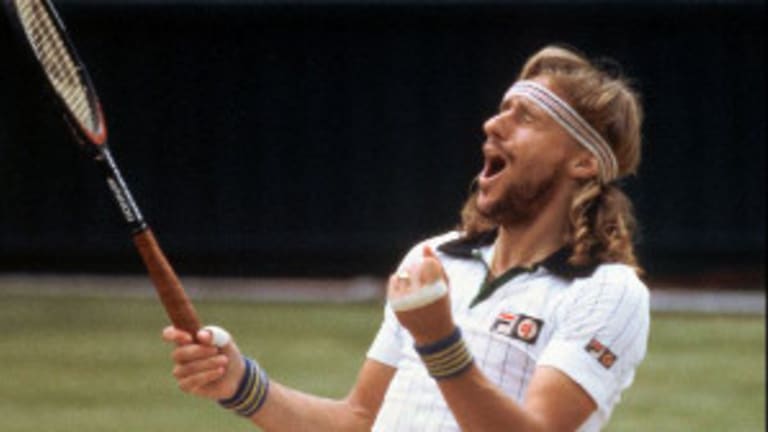This year marks the 50th anniversary of TENNIS Magazine's founding in 1965. To commemorate the occasion, we'll look back each Thursday at one of the 50 moments that have defined the last half-century in our sport.
The 1980 Wimbledon men’s final made tennis history even before a ball was hit. It was the first time that anyone at the All England Club could remember boos—a “cacophony” of them, according to one writer—raining down from the normally respectful Centre Court audience as the players walked out to play a championship match.
They were raining on one player, to be precise, and he was unlike any that Wimbledon had seen in its 104-year history. Twenty-one-year-old John McEnroe, the bellicose, frizzy-haired New Yorker known to the London tabloids as Superbrat, was making his debut in the final. There he would face the four-time defending champion, Bjorn Borg, the stoical, long-haired Swede who had once been known to those same tabloids as the Teen Angel. Their respective nicknames gave you a pretty good idea of who the fans at Wimbledon were rooting for that day.
Borg and McEnroe—righty vs. lefty, defender vs. attacker, ice vs. fire, machine vs. mad genius, civilization vs. its discontents—was a rivalry made in tennis heaven. While the two would face each other just 14 times over the course of four seasons, splitting those matches 7-7, they became the standard by which the sport’s future duels would be measured.
It was against Borg that McEnroe had made his impudent entrance onto the world tennis stage. In 1978, as an 18-year-old, he strode into Borg’s home arena, in Stockholm, and stunned the world’s best player in straight sets in front of the country's king; up to that point, Borg had never lost to a younger player. It was also against Borg that McEnroe would fulfill his vast promise for the first time, by raising his game to a place where even the Swede couldn’t follow in their Wimbledon and U.S. Open finals of 1981. McEnroe was so brilliant in those matches that Borg left the sport entirely rather than try to challenge him again. With his retirement from Grand Slam tennis in ’81, the first great period of the Open era would come to a sudden close.
But July 5, 1980, belonged to Borg, and this is the one match of theirs that tennis fans remember and celebrate to this day. That’s partly because it’s the one where the angel triumphed over the devil, and tennis fans got what they wanted. It’s also because, in its setting, its place in time, its wooden racquets, colorful headbands, short shorts, and wild hair, the 1980 Wimbledon final serves as a poignant reminder of a golden era now long past, when tennis reached a peak of popularity and cultural influence it would never reach again.
